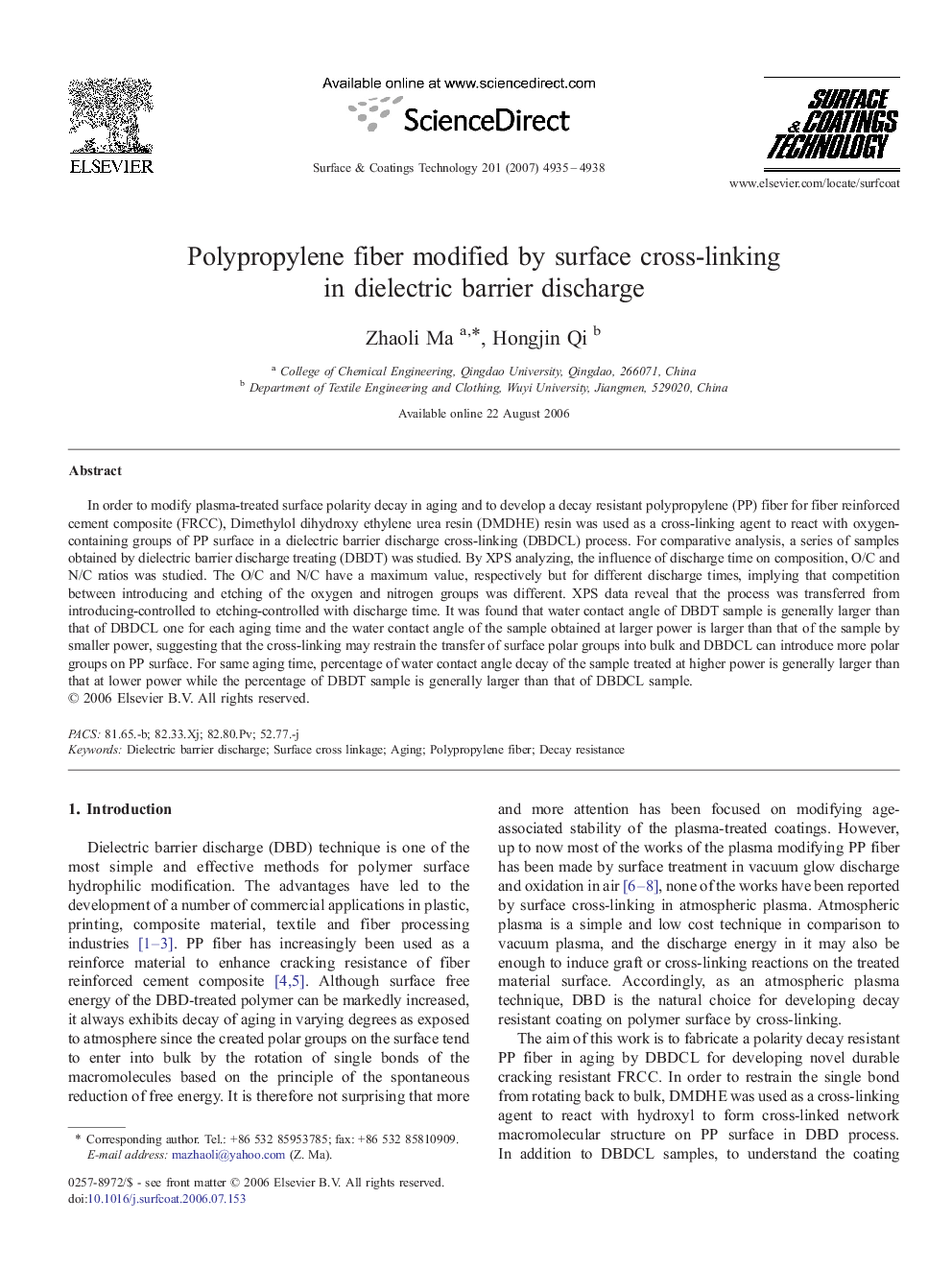| Article ID | Journal | Published Year | Pages | File Type |
|---|---|---|---|---|
| 1661555 | Surface and Coatings Technology | 2007 | 4 Pages |
In order to modify plasma-treated surface polarity decay in aging and to develop a decay resistant polypropylene (PP) fiber for fiber reinforced cement composite (FRCC), Dimethylol dihydroxy ethylene urea resin (DMDHE) resin was used as a cross-linking agent to react with oxygen-containing groups of PP surface in a dielectric barrier discharge cross-linking (DBDCL) process. For comparative analysis, a series of samples obtained by dielectric barrier discharge treating (DBDT) was studied. By XPS analyzing, the influence of discharge time on composition, O/C and N/C ratios was studied. The O/C and N/C have a maximum value, respectively but for different discharge times, implying that competition between introducing and etching of the oxygen and nitrogen groups was different. XPS data reveal that the process was transferred from introducing-controlled to etching-controlled with discharge time. It was found that water contact angle of DBDT sample is generally larger than that of DBDCL one for each aging time and the water contact angle of the sample obtained at larger power is larger than that of the sample by smaller power, suggesting that the cross-linking may restrain the transfer of surface polar groups into bulk and DBDCL can introduce more polar groups on PP surface. For same aging time, percentage of water contact angle decay of the sample treated at higher power is generally larger than that at lower power while the percentage of DBDT sample is generally larger than that of DBDCL sample.
